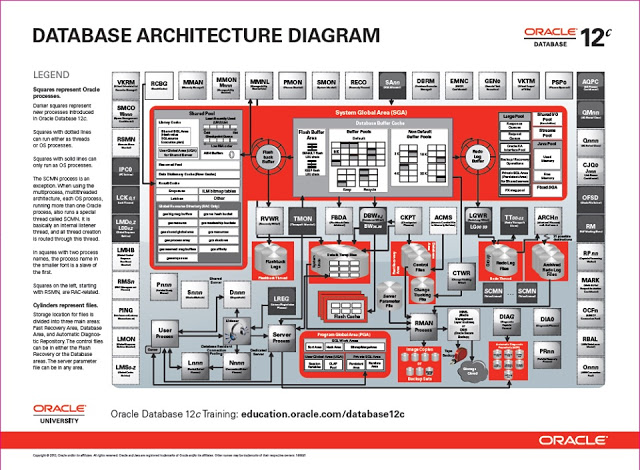The evolution of Oracle databases is as follows:
-
Oracle Database 7 (1992)
-
A client-server based relational database management system.
The query language is based on SQL.
-
Oracle Database 8i (1999)
-
A client-server based relational database management system, with object and multimedia capabilities included.
Java has been added to the database capabilities.
The i in the name stands for Internet.
-
Oracle Database 9i (2001)
-
It features full XML database functionality with the new Oracle XML DB feature, and other improvements.
-
Oracle Database 10g (2003)
-
The first database designed for enterprise grid computing, which provides an environment in which individual users can access computers, databases, and experimental facilities simply and transparently, without having to consider where those facilities are located.
The g in the name stands for grid.
-
Oracle Database 11g (2007)
-
Oracle Database 11g features include built-in testing for changes, the capability of viewing tables back in time, superior compression of all types of data and enhanced disaster recovery functions.
-
Oracle Database 12c (2013)
-
Oracle Database 12c is designed for the cloud.
It introduces a multitenant architecture that simplifies the process of consolidating databases onto the cloud; enabling customers to manage many databases as one—without changing their applications.
The c in the name stands for cloud.
Several terms are related to Oracle databases are as follows:
-
SQL /see'qu*l/ (Structured Query Language)
-
A language which provides a user interface to relational database management systems, developed by IBM in the 1970s for use in System R.
SQL is the de facto standard, as well as being an ISO and ANSI standard.
It is often embedded in general purpose programming languages.
- The first SQL standard, in 1986, provided basic language constructs for defining and manipulating tables of data.
- A revision in 1989 added language extensions for referential integrity and generalized integrity constraints.
- Another revision in 1992 provided facilities for schema manipulation and data administration, as well as substantial enhancements for data definition and data manipulation.
-
SQL Developer
-
An IDE for working with SQL in Oracle databases.
Oracle Corporation provides this product free, and it uses the Java Development Kit.
-
SQL*Plus
-
The Oracle database interface enables you to manipulate SQL commands and PL/SQL blocks.
-
SQL*Loader
-
A utility program that reads operating system text files and converts the contents into fields in a table.

|